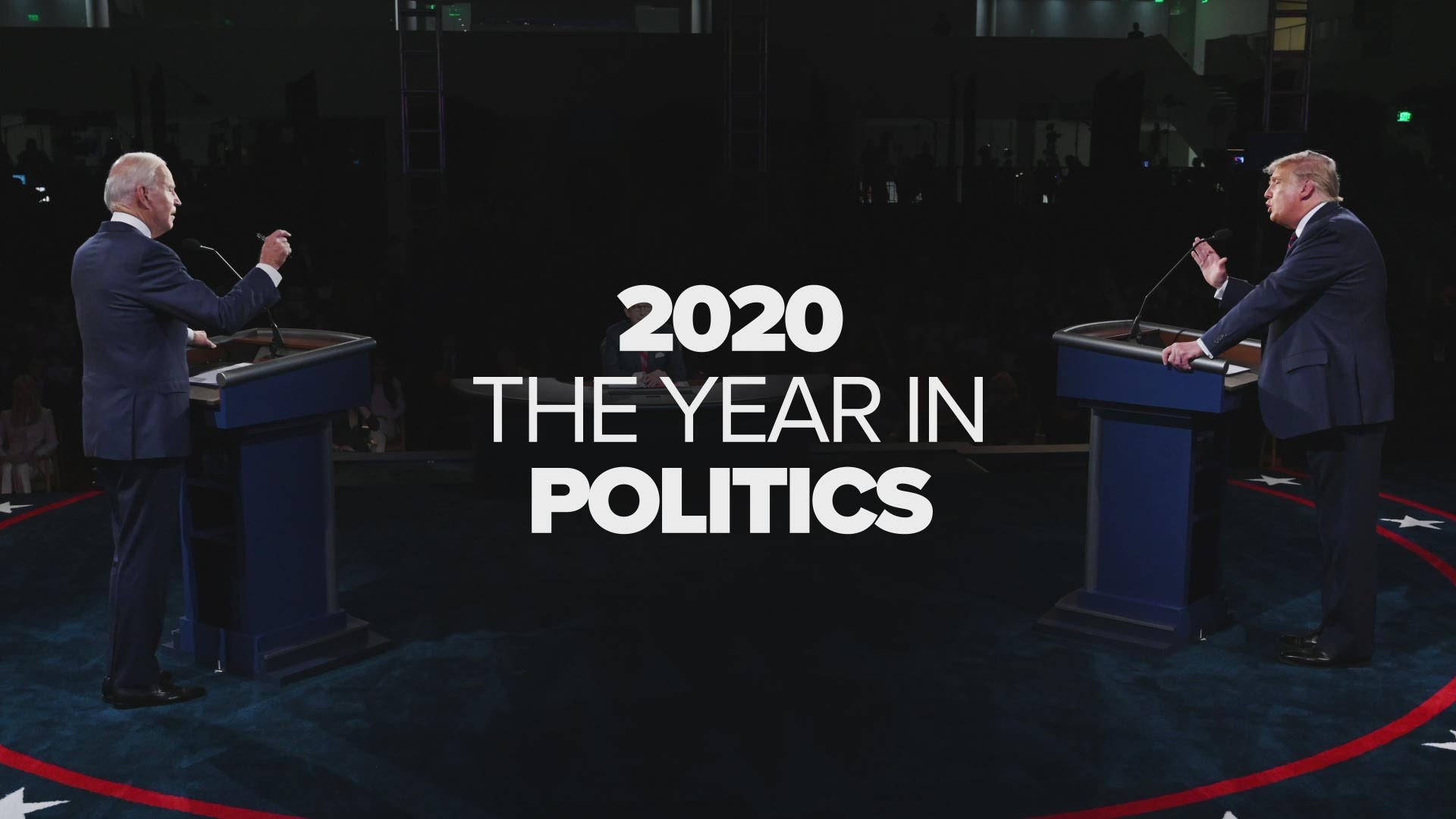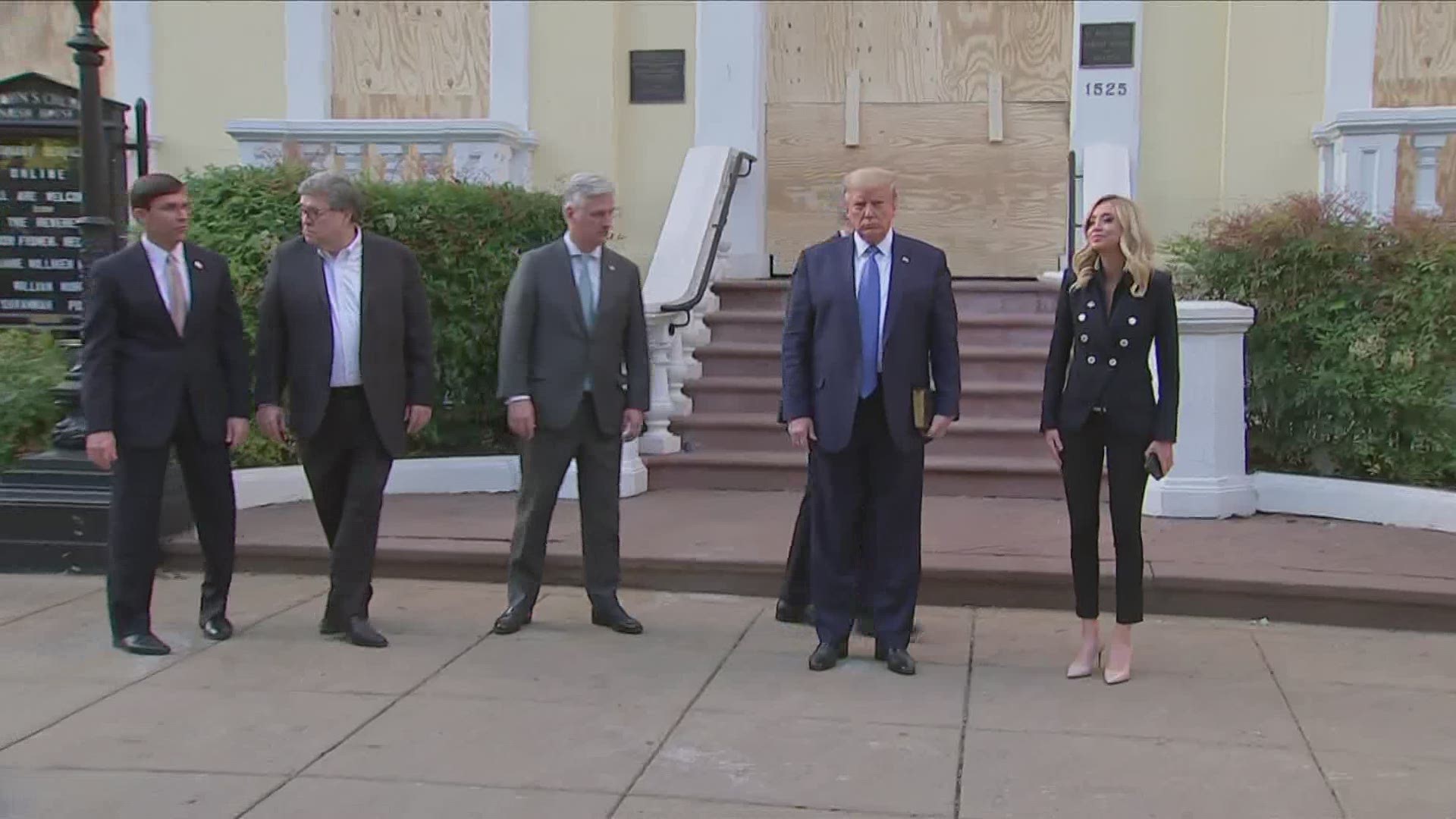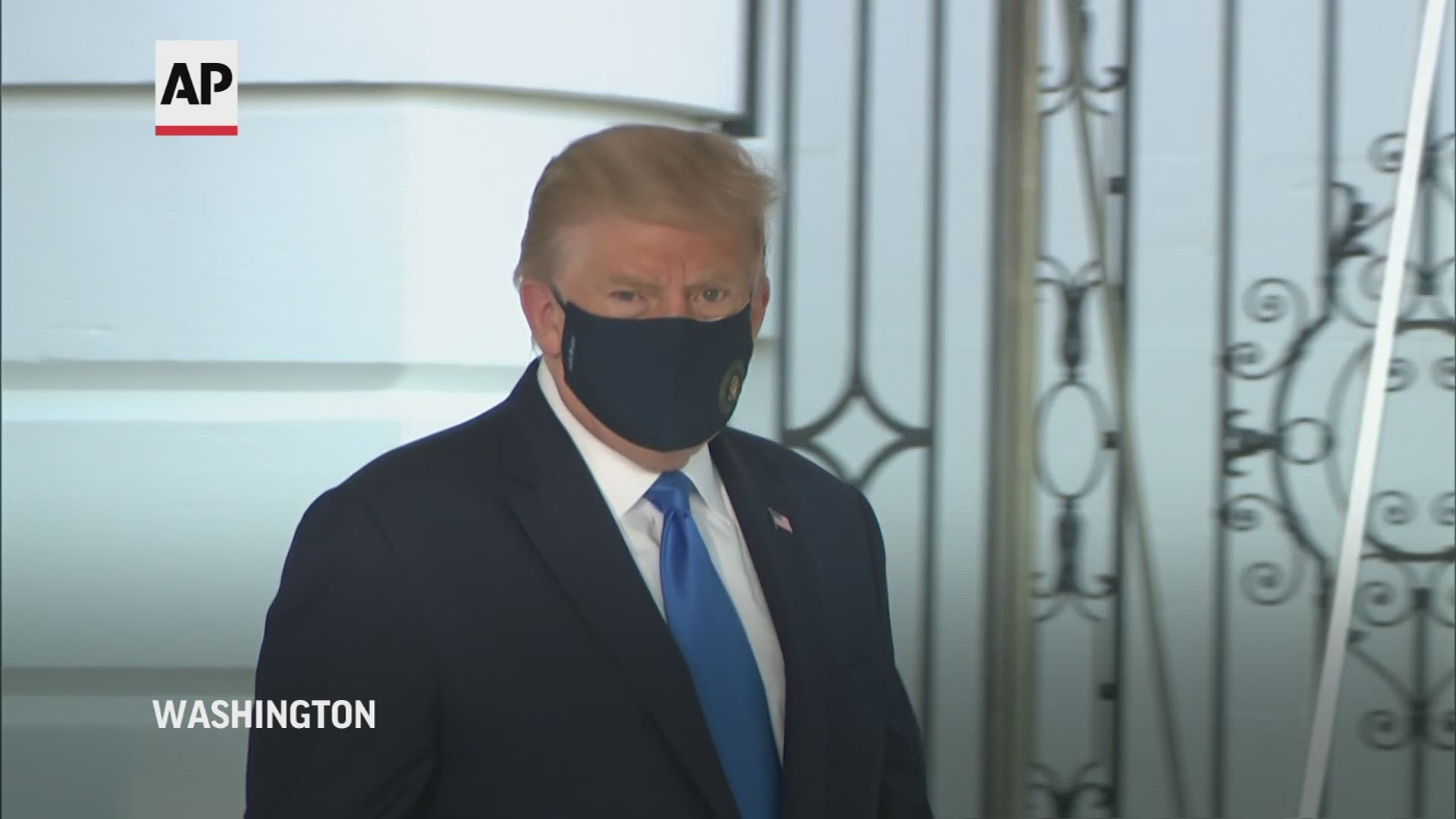At the start of 2020, the political world was firmly fixated on the looming U.S. presidential election, but when the coronavirus pandemic shut down the country in March, the nation’s focus quickly shifted.
Political leaders across the country were forced to come up with quick solutions to try and save the country’s physical and financial health.
But the election eventually took center stage again as Democratic President-elect Joe Biden beat Republican incumbent President Donald Trump. To this day, Trump has continued to publicly challenge the outcome of the election and refuses to concede to Biden.
Below is a timeline of some of the major events that rocked the political world in 2020.
January 2
Entering into the last full year of his presidency, Trump ordered the killing of Qasem Solemani, an Iranian general who was the architect of Iran’s regional security apparatus. Solemani was killed by an airstrike at Baghdad’s international airport in Iraq.
"This strike was aimed at deterring future Iranian attack plans. The United States will continue to take all necessary action to protect our people and our interests wherever they are around the world,” the Department of Defense said at the time.
February 3
Pete Buttigieg, a political novice and former mayor of South Bend, Indiana, won the Democratic Iowa Caucus. Mayor Pete barely edged out rival Sen. Bernie Sanders to win the most delegates from Iowa. Biden came in a distant fourth.
Although, voters’ first chance to voice their pick for the Democratic presidential nomination was anything but smooth. Problems with a mobile app forced a major delay in reporting the results of the Iowa caucuses.
February 5
Trump was acquitted of two impeachment charges in the U.S. Senate in early February. After formally being impeached by the Democrat-controlled House of Representatives at the end of 2019, the Republican-controlled Senate received the charges and quickly began a trial for the president’s removal from office. The charges of abuse of power and obstruction of Congress stemmed from a July 2019 phone call between Trump and Ukrainian President Volodymyr Zelensky.
At the time, Trump held up nearly $400 million in military aid to Ukraine while calling on the country to investigate Joe Biden.
On the charge of abuse of power, Utah Sen. Mitt Romney joined Democrats in voting to convict, but the tally on that charge was 48-52 for not guilty. The obstruction of Congress charge came with a 47-53 vote.
For a conviction, 67 guilty votes would have been necessary.


March 3
Coming off a win in the South Carolina primary, former Vice President Joe Biden gained significant traction on Super Tuesday and won a majority of states and overtook rival Sen. Bernie Sanders in the delegate count. The win for Biden was months in the making. Key endorsements from former presidential candidates, including Sen. Amy Klobuchar and Mayor Pete Buttigieg, fueled his victory.
Following March 3, Biden and Sanders were the only two viable candidates left in the 2020 race.
March 11
As the coronavirus began to quickly spread in the United States, President Donald Trump announced the suspension of travel from Europe for at least 30 days in a prime-time address to the nation. Three days later, the near-daily coronavirus task force press briefings began with Dr. Anthony Fauci and Dr. Deborah Birx quickly becoming household names.
March 27
The president signed the record $2 trillion Coronavirus Aid, Relief, and Economic Security (CARES) Act with bipartisan support from both chambers of Congress. The law provided a $1,200 direct payment to American workers and set up funds to help small businesses as the pandemic significantly slowed economic activity in the country.
April 8
Presidential candidate Sen. Bernie Sanders dropped out of the 2020 presidential race, making Joe Biden the presumptive Democratic nominee. The race was then between President Trump and Biden.
June 1
The country erupted in protests following the death of George Floyd, a Black man killed by police in Minneapolis, with many seeking racial justice. As Trump made some of his first comments following Floyd’s death in the Rose Garden at the White House, police, including U.S. Secret Service agents, Park Police and National Guardsmen, began forcefully pushing protesters back away from the White House firing tear gas and deploying flash bangs into the crowd.
It was moments later that President Trump walked out of the White House gates, through Lafayette Square and to St. John’s Church, which had been damaged a day earlier in a protest fire.
Trump then stood in front of cameras as he raised a Bible for reporters to see. He then invited his attorney general, national security adviser, chief of staff, press secretary and defense secretary to all join him for a few photos before returning to the White House.
August 11
Joe Biden selects former presidential candidate and California Sen. Kamala Harris to be his running mate. Harris goes on to become the first Black or South Asian woman elected as vice president of the United States
August 17-20
The first-ever virtual Democratic National Convention begins with speakers and recorded speeches from around the country. Originally planned to be hosted in Milwaukee, Biden and Harris delivered their speeches on the third and fourth night of the convention, respectively, from Biden’s hometown of Wilmington, Delaware. Other speakers at the convention included both Barack and Michelle Obama, Sen. Bernie Sanders, and Rep. Alexandria Ocasio-Cortez, among dozens of others.


August 24-27
A week after the Democrats had the spotlight, Republicans took the stage with speeches mainly based out of the Andrew W. Mellon Auditorium in Washington, D.C.
The official, formal nominations of President Trump and Vice President Mike Pence occurred in Charlotte, North Carolina on the Monday of the convention. While the convention was supposed to take place in Charlotte all along, the RNC initially announced the main events of the convention would be moved to Jacksonville, Florida so they could host larger gatherings not permitted by North Carolina due to the coronavirus pandemic. But as cases began to rise, the events scheduled in Jacksonville were canceled in late July.
Trump ended up giving his nomination acceptance speech on the South Lawn of the White House. The speech ended with an elaborate fireworks display over the national mall.


September 18
Longtime Supreme Court Justice Ruth Bader Ginsburg died at the age of 87 following a battle with pancreatic cancer. Ginsburg overcame adversity because of her gender, fought for women’s rights and eventually became the leader of the Supreme Court’s liberal wing.
Despite her death coming less than two months before the presidential election, Republican leaders quickly moved ahead with trying to fill Ginsburg's seat on the nation's highest court.
September 26
President Trump announced in an event in the Rose Garden that he would nominate Amy Coney Barrett to the U.S. Supreme Court.
Democrats called on Republicans to wait to nominate someone until after the presidential election, but Republicans were able to confirm Barrett to the nation’s highest court in October.
September 29
President Trump and former Vice President Biden participated in the first presidential debate in Cleveland. The debate erupted into near chaos as Trump frequently interrupted Biden and debate moderator Chris Wallace.

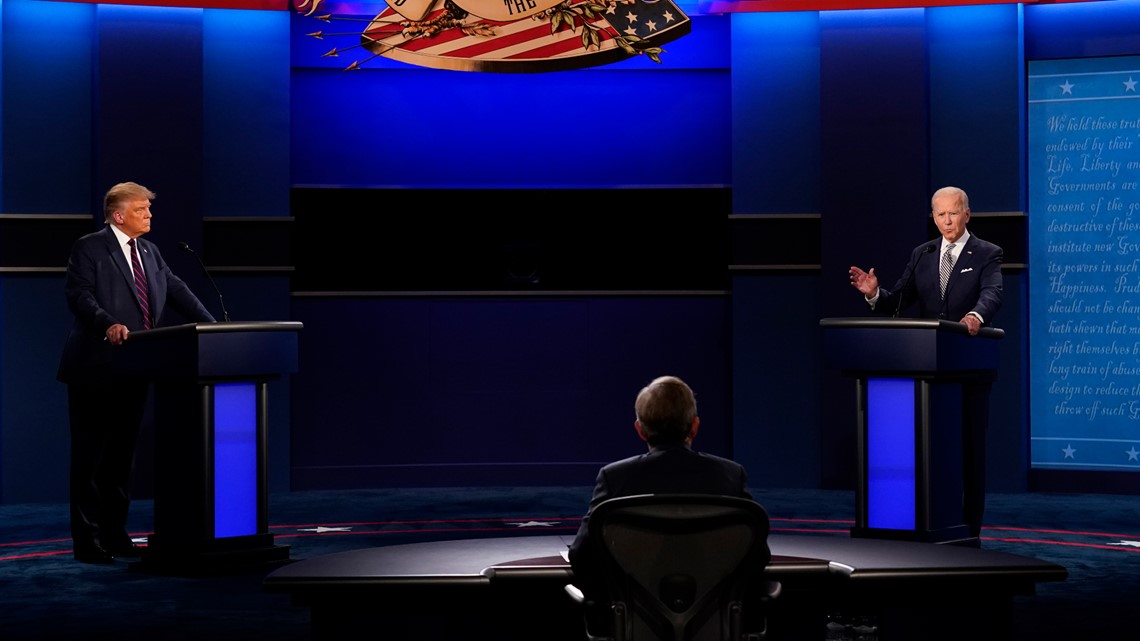
October 2
In the early hours of Oct. 2, President Trump tweeted that he and first lady Melania Trump had both tested positive for coronavirus. The news came shortly after the first couple said they would quarantine following the positive test of White House Communications Director Hope Hicks.
Less than 24 hours after announcing his diagnosis, Trump was flown to Walter Reed Medical Center for three days to receive treatment. It soon became evident that the events surrounding the Rose Garden ceremony formally nominating Amy Coney Barrett to the Supreme Court spread the virus to at least a dozen people.
November 3
Election Day finally arrives and millions of Americans head to the polls to cast their votes. With the coronavirus pandemic, a record 100 million Americans voted early.
Due to a massive surge in absentee votes, it was clear that the winner of the election wasn't going to be known for some time.
November 7
Former Vice President Joe Biden becomes president-elect after a projected win in Pennsylvania put him over the 270 electoral votes needed to win. Biden was able to flip several states Trump won in 2016 including Arizona, Georgia, Michigan, Pennsylvania and Wisconsin. To this day, President Trump and his allies have tried to discredit the election by filing lawsuits and making unsubstantiated claims about voter fraud in several key swing states.
November 24
A day after the General Services Administration gave the green light for Biden to begin coordinating with federal agencies ahead of his January 20 inauguration, Biden announced key appointments to his administration including Tony Blinken as Secretary of State, Janet Yellen as Treasury Secretary and Alejandro Mayorkas as the head of the Department of Homeland Security. All are subject to Senate approval before being sworn in.

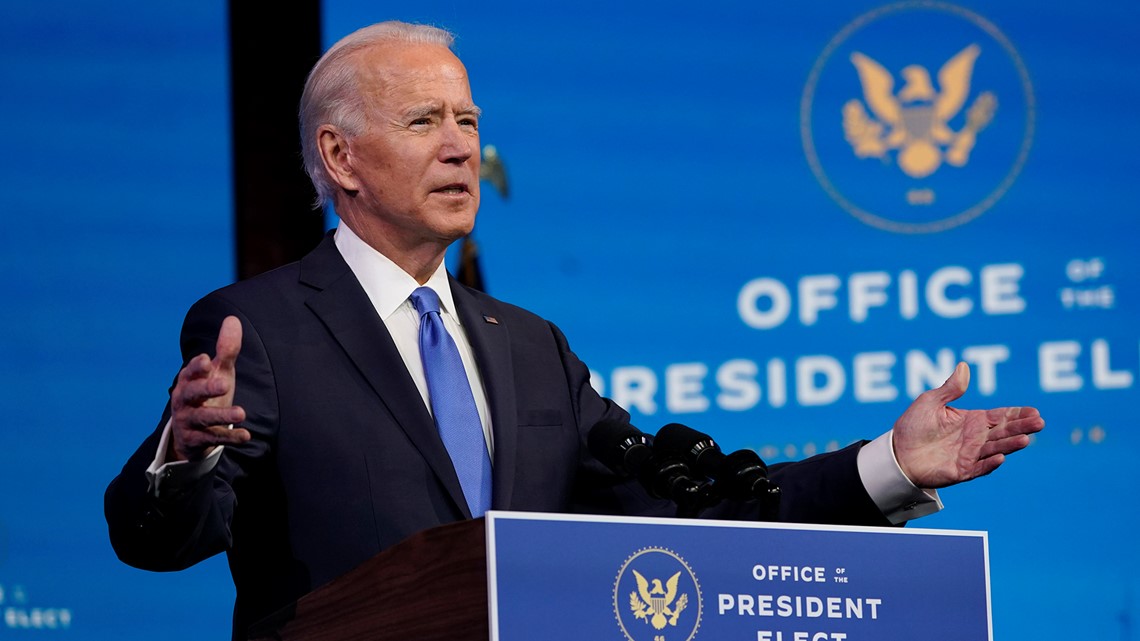
December 14
The Electoral College formally chooses Joe Biden as the nation’s next president, giving him a solid electoral majority of 306 votes and confirming his victory in last month’s election. The state-by-state voting took on added importance this year because of Trump's refusal to concede he had lost.

